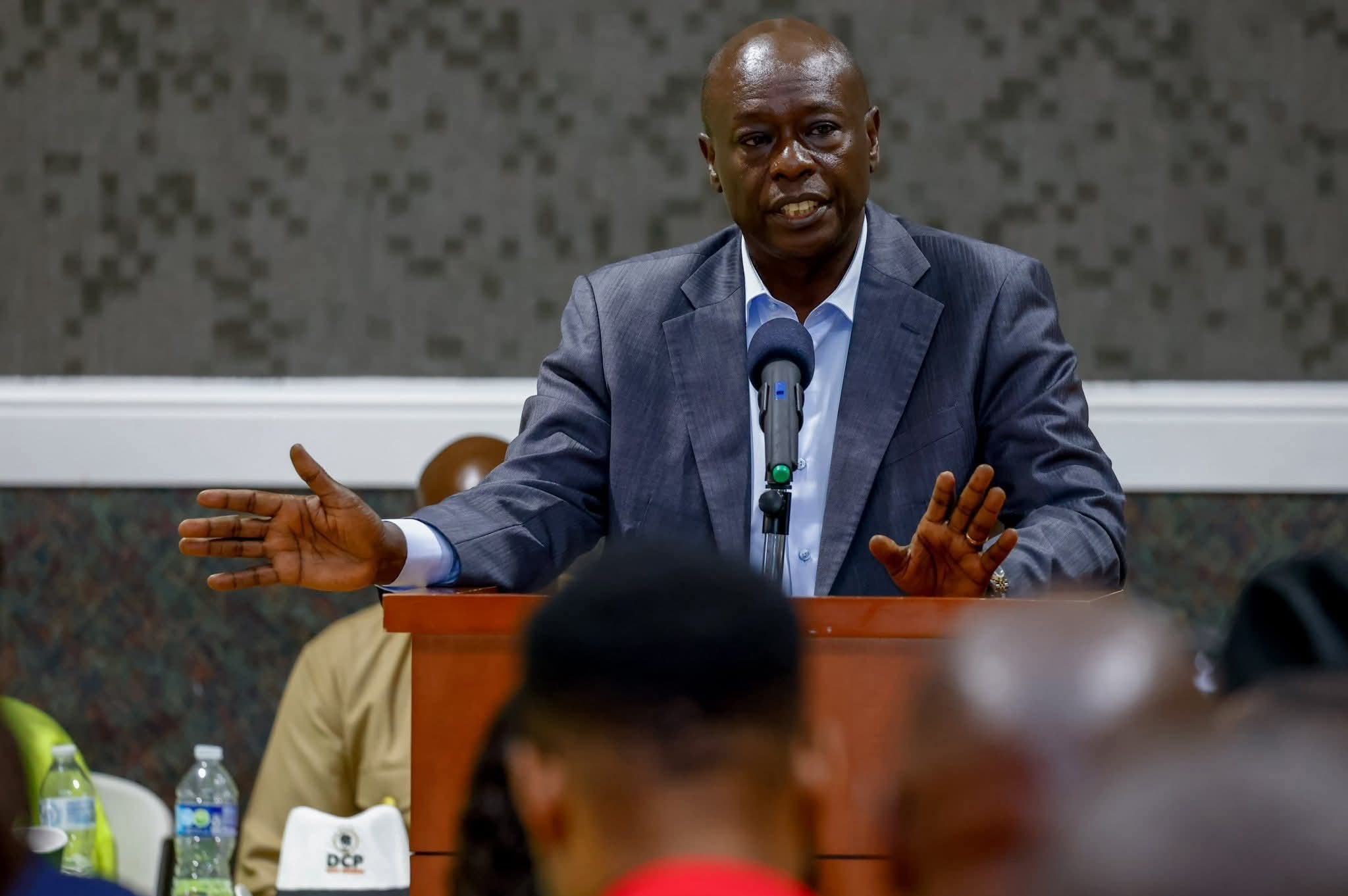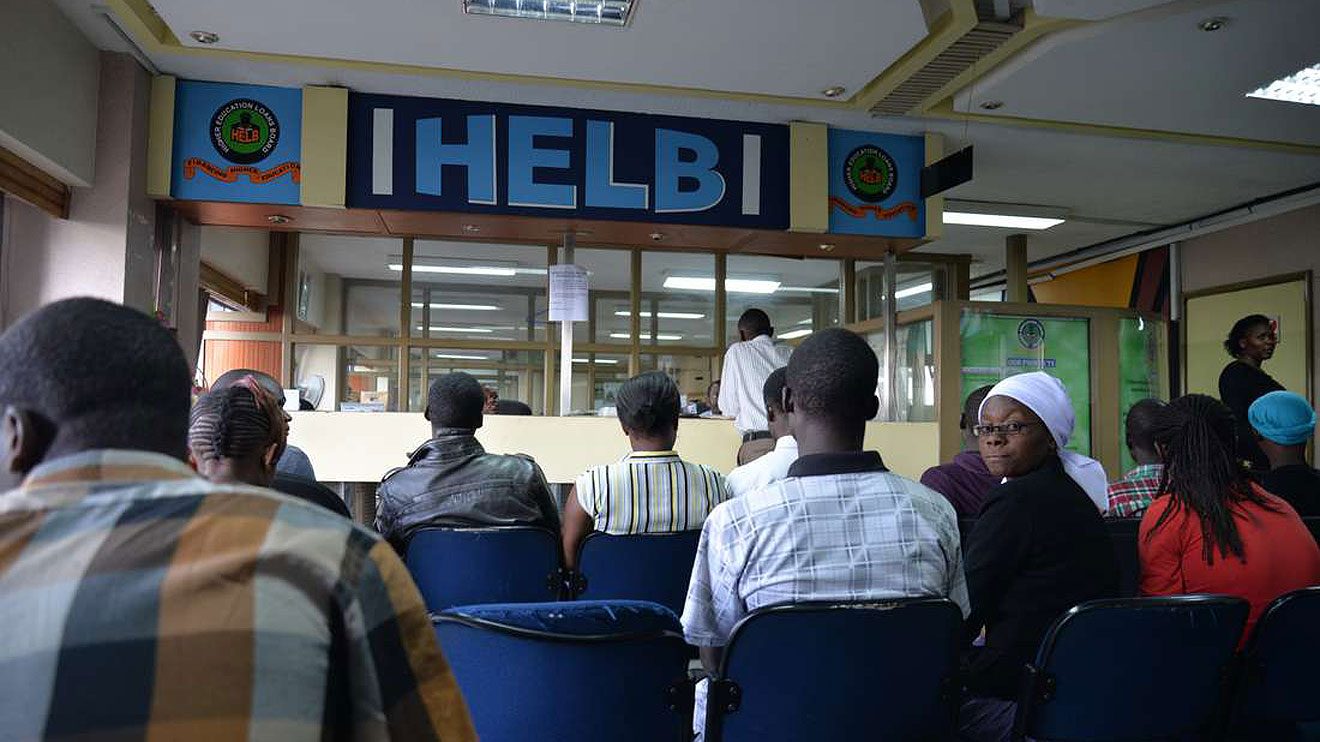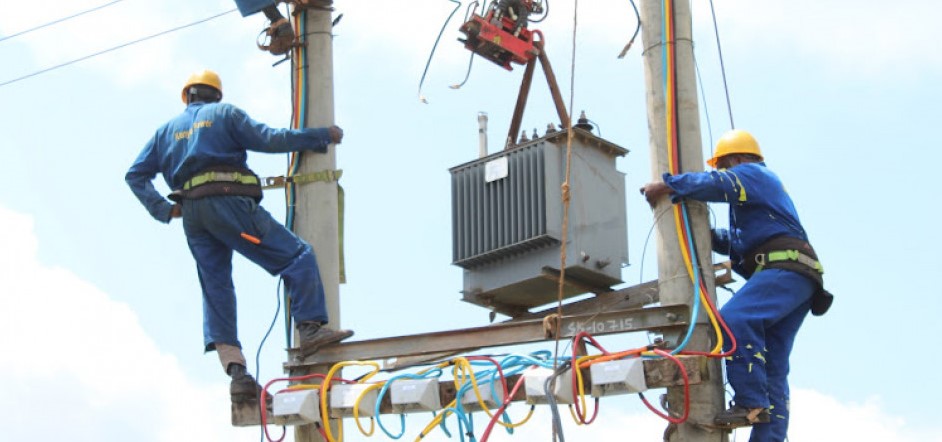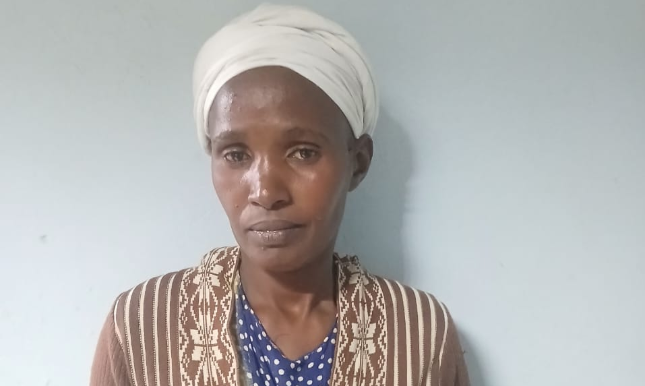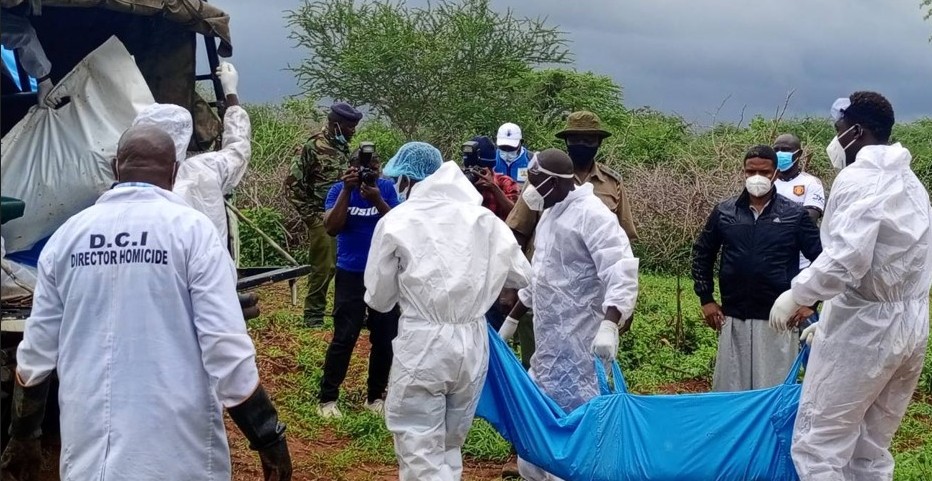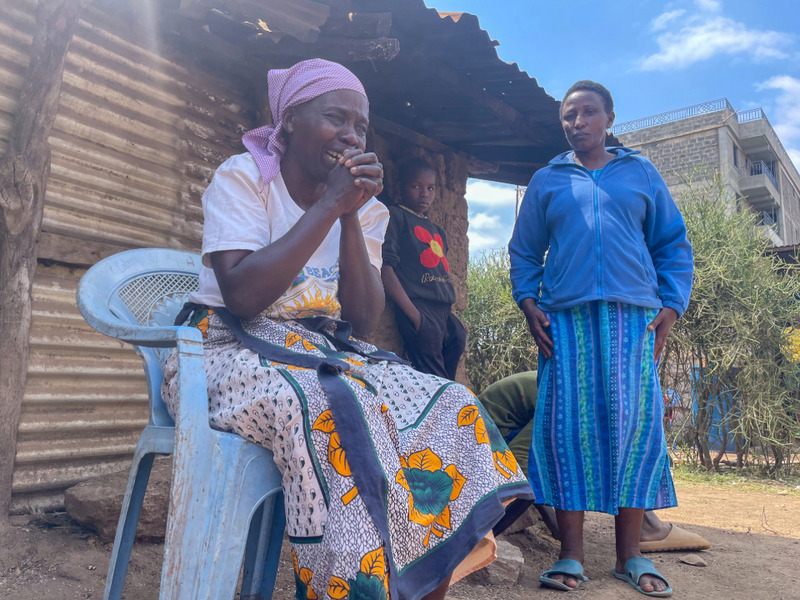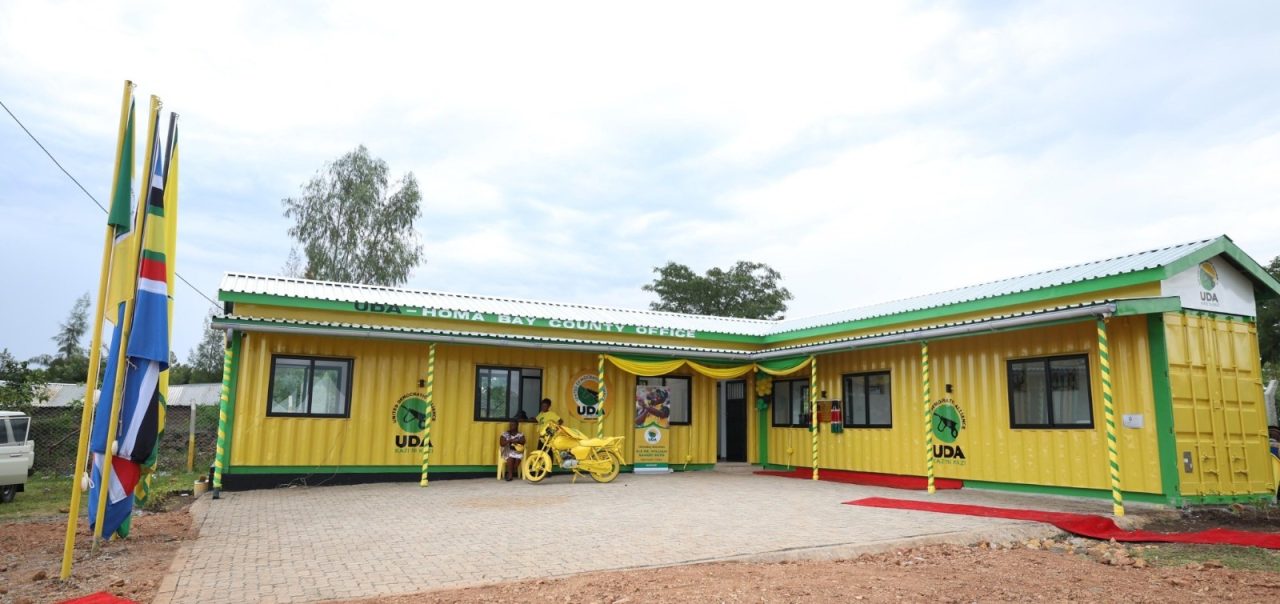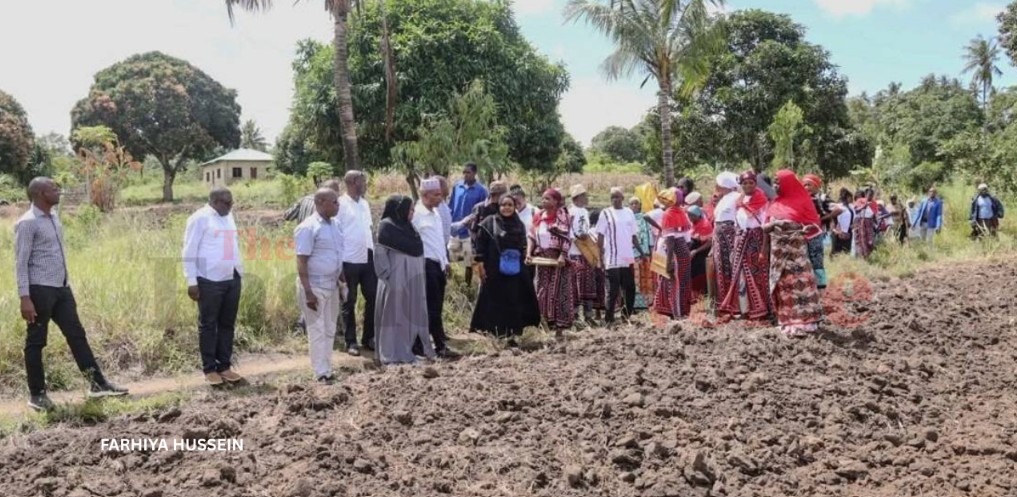Creativity in crisis: Kitui village artisans fight to save Nairobi’s craft heritage after market fire

In humble workshops made of corrugated iron and timber, they transform dreams into wooden carvings, beaded jewellery, woven baskets, and furniture that finds its way across Kenya and beyond.
In Kitui village, within Nairobi's Kamukunji Constituency, the rhythmic clanging of hammers blends with the pulse of tradition at the Nairobi Handicraft Cooperative Society—affectionately known as Kachongaa.
This vibrant community of over 800 artisans has dedicated their lives to craft, culture, and creativity.
More To Read
- Residents of Eastleigh’s Seventh Street demand urgent road repairs
- 175 Kamukunji youth receive business equipment from President Ruto to boost employment and income
- Paved road brings new life to Kamukunji’s Kitui village, residents push for street lights next
- State delivers relief aid to fire victims of Kasilili Village in Kamukunji's Airbase Ward
- ‘We’ve lost everything’: Traders plead for help after fire ravages handicraft market in Kamukunji
- Kamukunji's quiet triumph: How community effort revitalised a historic Nairobi space
In humble workshops made of corrugated iron and timber, they transform dreams into wooden carvings, beaded jewellery, woven baskets, and furniture that finds its way across Kenya and beyond.
But behind the beauty of their work lies a sobering reality: this community lives under the constant shadow of disaster.
That fear became reality once again in the early hours of a quiet Sunday morning.
Devastating fire
Around 3 am, a fire—suspected to have started in a nearby hotel—tore through the market at alarming speed.
Fuelled by flammable workshop materials and dry timber, the flames swiftly consumed ten artisan stalls and five hotels, reducing them to ashes. In mere minutes, years of labour, investment, and passion were wiped out.
The aftermath was devastating. Charred wood, melted tools, and blackened machines lay scattered—lifework reduced to ruins.
David Kilonzo, chairperson of the Nairobi Handicraft Cooperative Society, has grown weary of witnessing such tragedies.
Over the years, the artisans have endured fires, demolitions, floods, and economic hardships. Yet, he says nothing hurts quite like the destruction caused by fire.
“Every time there is a fire, we lose millions. We haven’t even recovered from last year’s fire, and now here we are again. One artisan alone lost machinery worth over Sh2.1 million—just in one shop. Multiply that across all ten workshops, and the losses are unimaginable.”
What makes matters worse, he explains, is that most artisans can’t afford insurance.
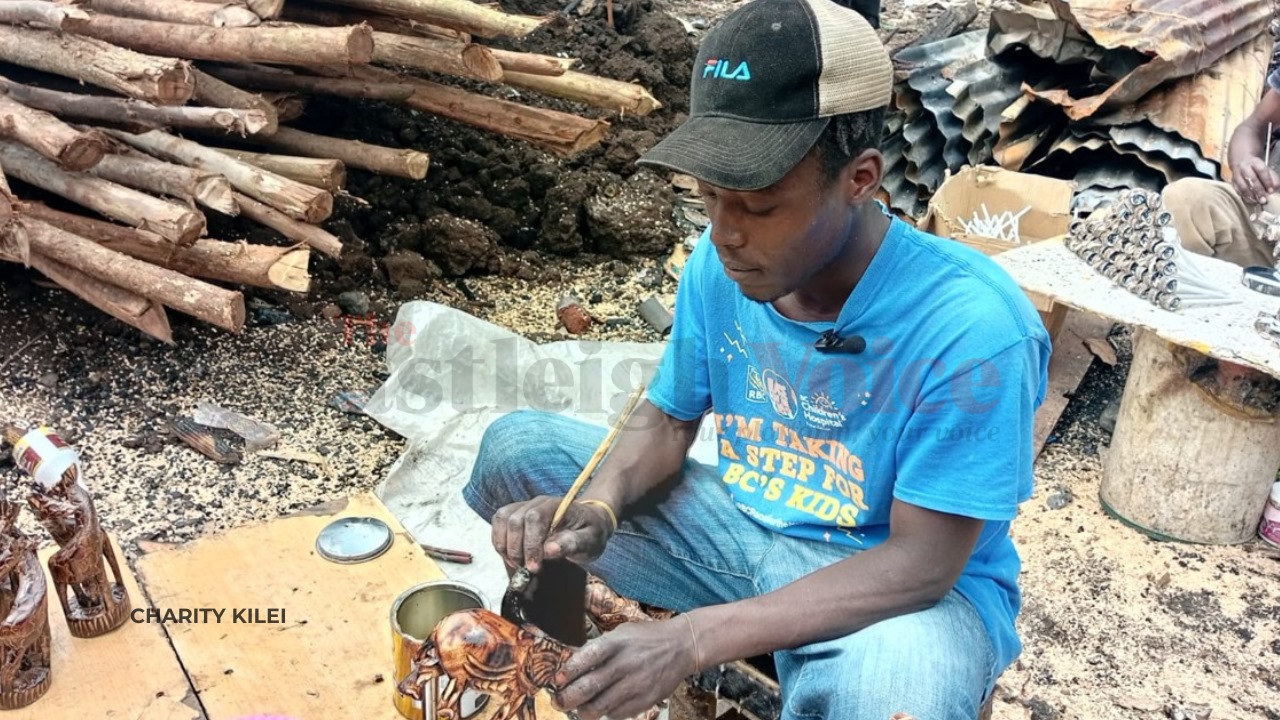 Benson Musembi, one of the artisans affected by the recent fire at the Nairobi Handicraft Market. (Photo: Charity Kilei)
Benson Musembi, one of the artisans affected by the recent fire at the Nairobi Handicraft Market. (Photo: Charity Kilei)
Their workshops—typically built from iron sheets and timber—are deemed too high-risk. Even those who attempt to get coverage are often rejected or quoted premiums far beyond their reach.
“We’ve approached insurance companies,” Kilonzo says, “but most refuse because of the structures. We’re working on it, but policies and premiums are out of reach. And until that changes, we remain exposed.”
Quicker response
While the losses are staggering, Kilonzo notes that this time, the response from the county government was quicker than in previous fires.
“The fire was contained before it spread further. That’s something we’re truly grateful for. Our local MCA, MP, and other leaders came to see us. They gave us food, building materials, and money to help us get back on our feet. We thank them for that love and support.”
Still, he insists, the community needs more than emergency aid. What they desperately want is the completion of the Gikomba fire station, a project that has stalled for years.
“If that fire station had been up and running,” he says, “maybe we could have saved more. We’re pleading with the government—please help us finish and equip that fire station.”
Among those affected is 54-year-old Christopher Wambua, a veteran artisan who has spent 35 years at the Nairobi Handicraft Market. He’s no stranger to heartbreak—his workshop was completely destroyed by fire in 2013. Now, history has cruelly repeated itself.
“I started from nothing back then. I rebuilt, step by step. Now it’s all gone again,” Wambua says, his voice heavy with fatigue. “It’s hard. We keep rebuilding, but these fires set us back every time.”
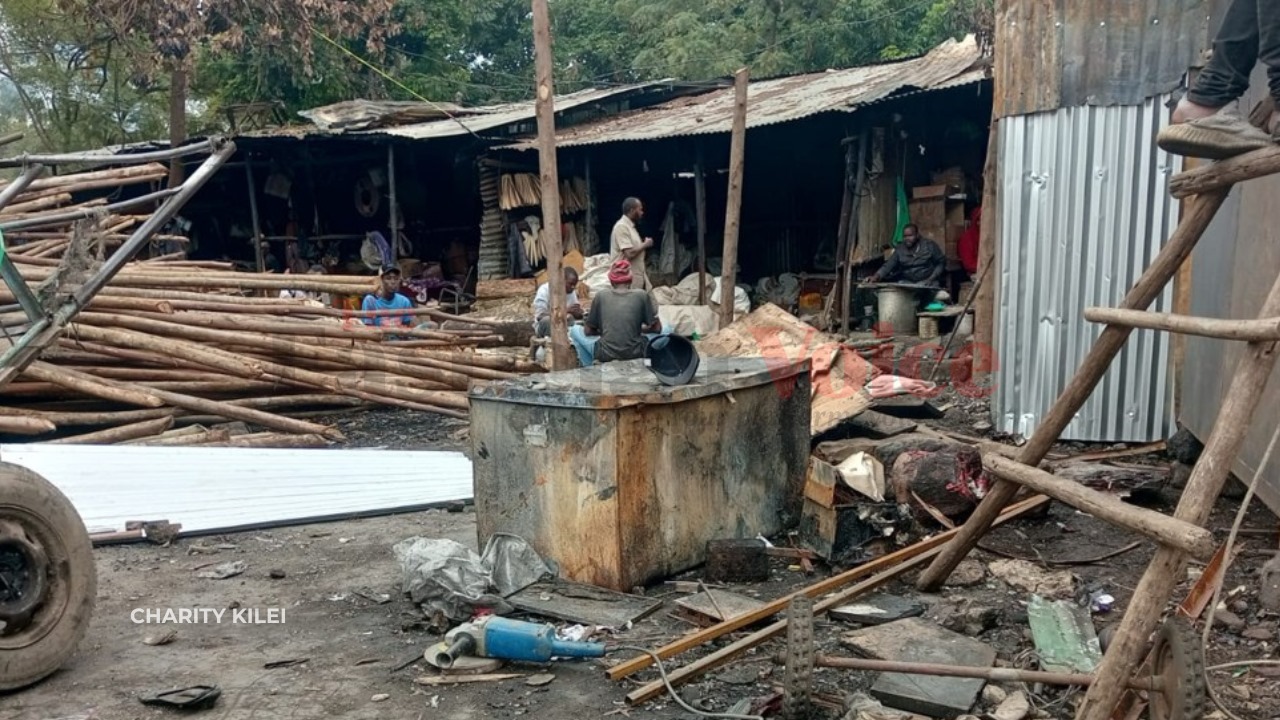 Artisans affected by the recent fire at the Nairobi Handicraft Market rebuilding their structures. (Photo: Charity Kilei)
Artisans affected by the recent fire at the Nairobi Handicraft Market rebuilding their structures. (Photo: Charity Kilei)
He points to a spot on the ground. “That’s where my machines were. I’ve lost millions of shillings, and with the economy the way it is, rebuilding is not easy. Customers are calling, waiting for their products. But what can we do? There’s nothing left.”
Like Kilonzo, he also struggled with insurance.
“We tried. But with our kind of structure—iron sheets and wood—most companies won’t touch us,” he says.
Threat to livelihood
Benson Musembi, a young artisan in his twenties, works from an open section of the market.
Part of a new generation striving to carve out a future in a challenging economy, he sees the fire not just as a setback, but as a direct threat to his livelihood.
“I lost stock worth about Sh50,000 and my entire working structure. That was all I had,” he says quietly. “I’ve been hustling to build myself, to stand on my own. Now I have to start again, with nothing.”
Still, Benson returns to the market each day, hoping to salvage what little he can and helping others rebuild as they wait for support.
Across the Nairobi Handicraft Market, artisans are doing the same—hammering together makeshift stalls from salvaged iron sheets, collecting charred timber, and trying to piece their lives back together. There is no shelter from the rain or sun, yet they continue working because they must.
Since its founding in 1970, the Nairobi Handicraft Cooperative Society has been a vital lifeline for Kenya’s artisans, offering training, marketing, and workspace to both self-employed and employed crafters. Non-members pay just Sh100 a day to access shared spaces. Many of the country’s most celebrated carvers, weavers, and craftsmen began their journey here.
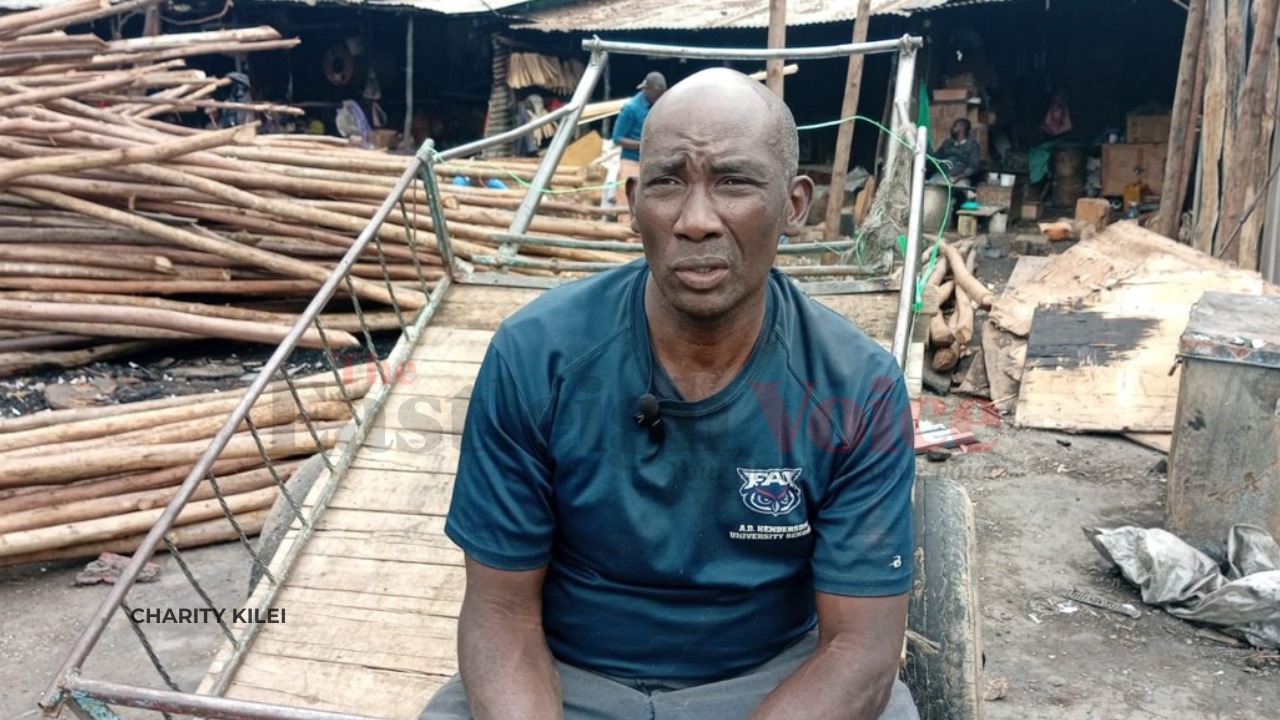 Christopher Wambua, an artisan whose workshop was burnt in the recent fire at the Nairobi Handicraft Market. (Photo: Charity Kilei)
Christopher Wambua, an artisan whose workshop was burnt in the recent fire at the Nairobi Handicraft Market. (Photo: Charity Kilei)
Heartfelt appeal
Today, the artisans are making a heartfelt appeal: complete the long-delayed Gikomba fire station, make insurance accessible, and provide real support for rebuilding. Without these, they warn, they will remain trapped in a cruel cycle—build, burn, rebuild—until even the most resilient among them begin to lose hope.
In 2024, the Nairobi Handicraft Cooperative Society faced one of the darkest chapters in its history. A relentless series of disasters stripped the community not only of its property but of its stability, dignity, and peace of mind.
It began with a massive fire that tore through the market, destroying dozens of workshops and reducing machines, tools, raw materials, and finished goods to ashes. Lifetimes of work vanished in hours.
Floods
Before recovery could begin, torrential floods hit the area, washing away what little remained and soaking already weakened structures, worsening the destruction.
Then came the final blow: a wave of demolitions targeting structures built near riparian land, where many artisans had long worked. Entire rows of workshops were razed without adequate notice or relocation plans, leaving families without shelter, tools, or any place to earn a living.
The aftermath has been bleak. Many artisans now work completely exposed to the elements—scorching heat by day, pounding rain by night. With makeshift shelters offering little protection and the loss of vital equipment slowing or halting production, many have been unable to recover.
More than a year later, countless artisans are still struggling to rebuild. With no permanent structures and limited financial support, they rely on borrowed tools, salvaged materials, and sheer community solidarity to get by.
Yet even in the ruins, they persist. Their hands remain their greatest tools—and their hope for a better tomorrow, their strongest driving force.
Top Stories Today
